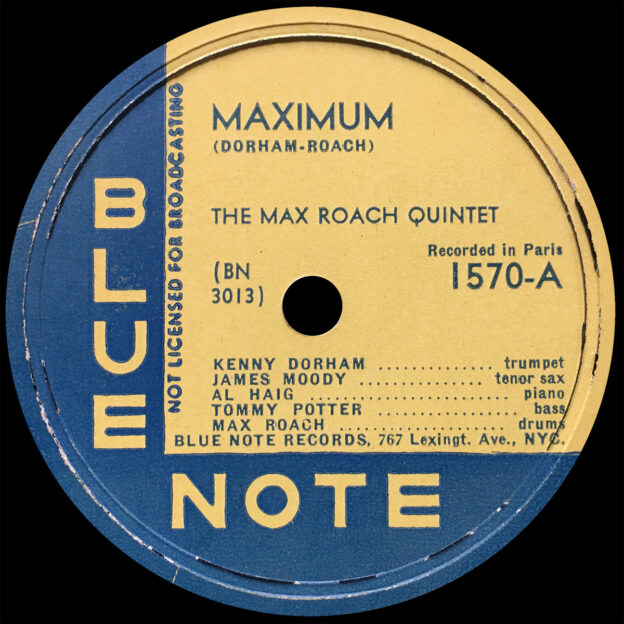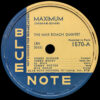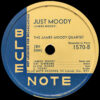Original 1949 pressing
“Maximum” recorded May 15, 1949 at Studio Technisonor, Paris
“Just Moody” recorded April 30, 1949 in Lausanne, Switzerland
Selection: “Maximum” (Dorham-Roach)
The A-side, “Maximum”, steals the show by a longshot. It was written by Max Roach and Kenny Dorham, and the title is surely a tribute to the former. I would be hard-pressed to find a more exhilarating musical performance in any era and in any genre of music. Indeed, Max Roach played a central role in making fast tempos fashionable during the bebop era. I have always been fascinated by how quickly bop is played at times, and several years ago I actually set out to determine which drummers in jazz could play the fastest. At the end of my survey, Max Roach and Tony Williams were at the top of the heap, unmatched in their ability to keep a steady, swift beat.
This track is of incredibly-low fidelity standards. But just like the other 78s covered here recently, that lack of sheen gives the recording oodles of character. In fact, I’m glad this wasn’t recorded in higher fidelity — can you imagine how different the overall feel would be if this was recorded at 30th Street in the 1960s? Bassist Tommy Potter gets lost in the lo-fi melee but everyone else cuts through with ease. Perhaps as a consequence of being the session leader, and despite the trend to subdue the drummer in 1940s recordings, leader Roach has a surprisingly up-front presence. This rightfully gives the sonic spotlight to Roach’s pedal-to-the-floor tour de force.
I have never heard such thunderous drumming in my life. Roach’s in-your-face snare packs a punch, and when he winds up for one of his machine-gun fills, watch out. (Depending on how you count a measure, and as a result of how fast the song is, Roach is technically only playing eighth notes during these rolls!) Solos by James Moody, Dorham, and Al Haig are all executed with astounding precision, all the more impressive when considering the quintet’s race-car velocity. But my god, Roach is superhuman on this. He is incredibly inventive, even while comping, and his accuracy is awe-inspiring.
Max and company recorded four other tunes on that Paris spring day in 1949. All five were released in the 78 format by Vogue Records in France originally. “Prince Albert”, “Maximum”, and “Yesterdays” (titled “Tomorrow” for this issuing) would all be licensed to Blue Note for 78 release before they appeared on Blue Note ten-inch 5010 three years later. “Baby Sis” (dubbed “Maxology”) would be licensed to Prestige Records for a 78 release here in the states, and “Hot House” (titled “Ham and Haig” — someone dodging publishing royalties???) would remain unissued in the U.S.
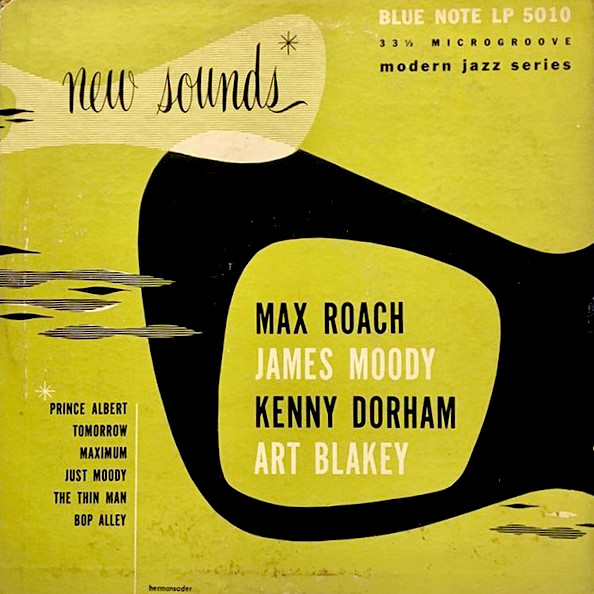 |
Nothing beats feeling the sheer weight of a shellac 78 in your hands. I have a special adoration for the original Blue Note 78 label as well. This precursor to the classic Blue Note LP label is perfect in every way. I love the thicker block font of the company name and how everything fits neatly within in the 78 label’s smaller surface area. I also like how the deep groove lines up with the edge of the label as originally intended. The hazy yellow — preceded and succeeded by the more familiar off-white — has an edginess, though I wonder if this was an intentional aesthetic choice despite the fact that many Blue Note 78s look like this.
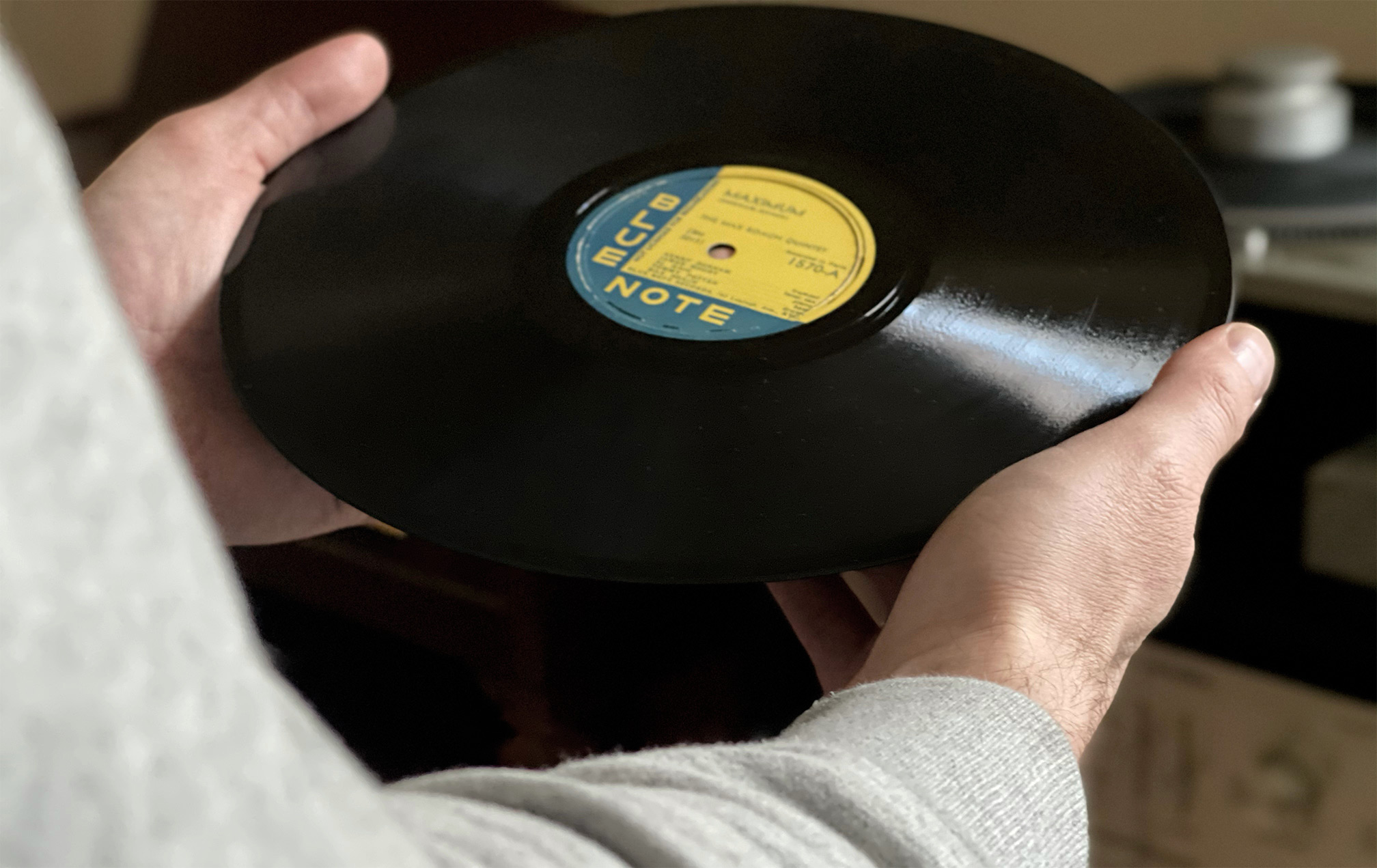 |
| Getting ready to (gently) drop this record on my turntable |
Disks like this make record collecting worth it, and I’m glad to have stumbled upon this record when I did. Episode 2 of Origins of Bop is slated for next week so stay tuned.

